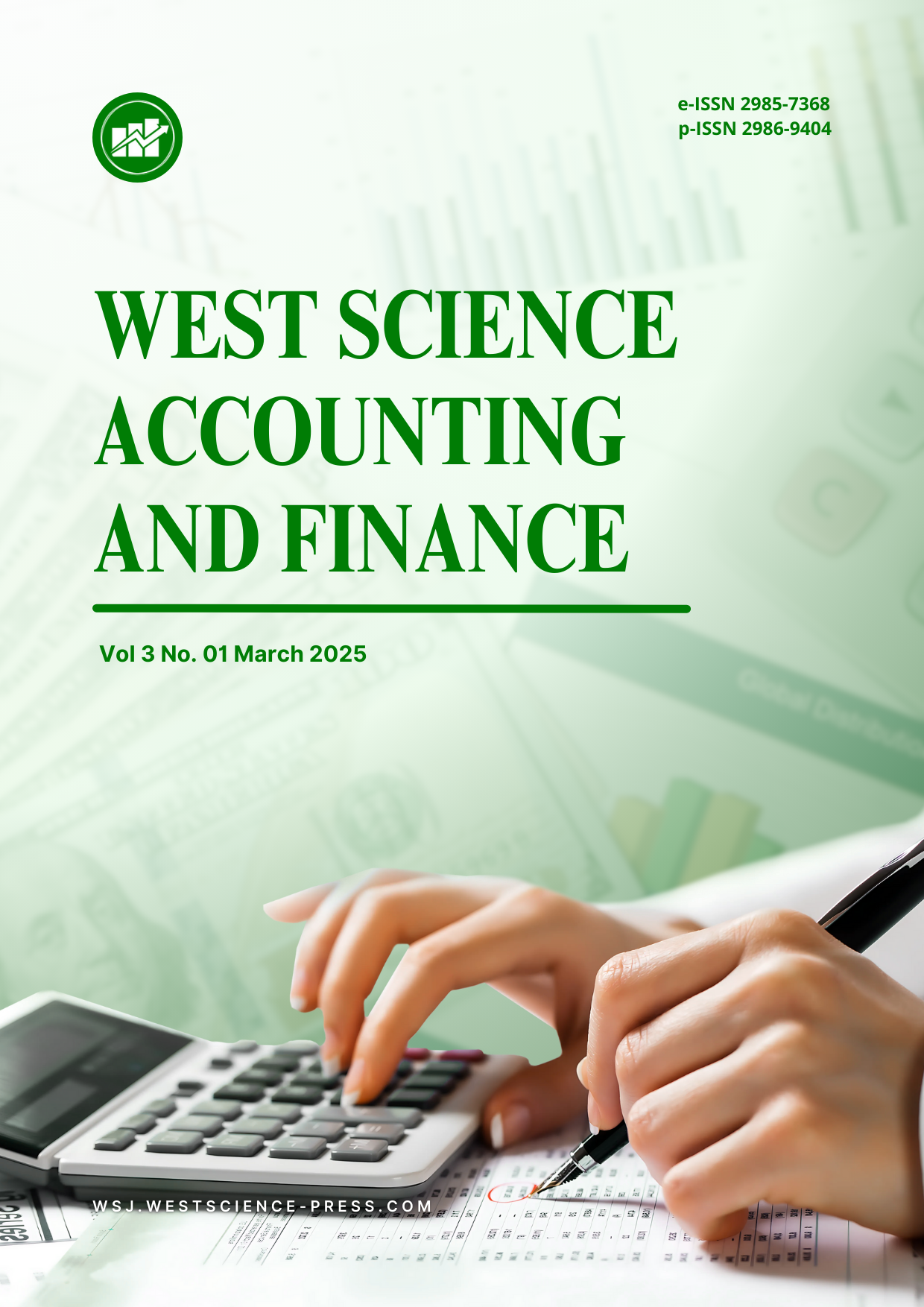Bibliometric Analysis of Financial Inclusion Research
DOI:
https://doi.org/10.58812/wsaf.v3i01.1743Keywords:
Financial Inclusion, Bibliometric Analysis, FinTech, Digital Finance, Financial LiteracyAbstract
Financial inclusion has emerged as a crucial factor in promoting economic development, reducing poverty, and fostering financial stability. This study employs a bibliometric analysis to explore the intellectual landscape, key research themes, and trends in financial inclusion research using data exclusively from the Scopus database. Utilizing VOSviewer, the study examines keyword co-occurrence, co-authorship networks, and geographic distribution to identify influential scholars, institutions, and countries contributing to the field. The findings reveal an evolution from traditional microfinance approaches toward digital financial services, financial technology (FinTech), and sustainability-linked financial inclusion initiatives. The analysis highlights strong international research collaborations, with India, China, and the United Kingdom playing significant roles in shaping financial inclusion discourse. Moreover, emerging research trends suggest an increasing focus on digital finance, environmental sustainability, and gender disparities in financial access. Despite progress, persistent challenges such as financial literacy gaps, regulatory barriers, and regional inequalities remain critical concerns. This study contributes to the understanding of financial inclusion research trends and provides insights for policymakers, financial institutions, and researchers to design more inclusive and effective financial policies. Future research should integrate interdisciplinary approaches and advanced data analytics to address existing gaps and enhance financial accessibility globally.
References
[1] A. Sanderson, L. Mutandwa, and P. Le Roux, “A review of determinants of financial inclusion,” Int. J. Econ. Financ. Issues, vol. 8, no. 3, p. 1, 2018.
[2] A. Demirgüç-Kunt and L. F. Klapper, “Financial inclusion in Africa: An overview,” World Bank policy Res. Work. Pap., no. 6088, 2012.
[3] S. M. Dev, “Financial inclusion: Issues and challenges,” Econ. Polit. Wkly., pp. 4310–4313, 2006.
[4] P. K. Ozili, “Theories of financial inclusion,” in Uncertainty and challenges in contemporary economic behaviour, Emerald Publishing Limited, 2020, pp. 89–115.
[5] P. Mader, “Contesting financial inclusion,” Dev. Change, vol. 49, no. 2, pp. 461–483, 2018.
[6] M. Aria and C. Cuccurullo, “A brief introduction to bibliometrix,” J. Informetr., vol. 11, no. 4, pp. 959–975, 2017.
[7] Z. Fungáčová and L. Weill, “Understanding financial inclusion in China,” China Econ. Rev., vol. 34, pp. 196–206, 2015.
[8] N. Donthu, S. Kumar, D. Mukherjee, N. Pandey, and W. M. Lim, “How to conduct a bibliometric analysis: An overview and guidelines,” J. Bus. Res., vol. 133, pp. 285–296, 2021.
[9] D. Subbarao, “Financial inclusion: Challenges and opportunities,” Reserv. Bank India’s Bankers Club, Kolkata, December, vol. 9, 2009.
[10] T. Arun and R. Kamath, “Financial inclusion: Policies and practices,” IIMB Manag. Rev., vol. 27, no. 4, pp. 267–287, 2015.
[11] A. Hannig and S. Jansen, “Financial inclusion and financial stability: Current policy issues,” ADBI Working Paper, 2010.
[12] N. Cámara and D. Tuesta, “Measuring financial inclusion: A multidimensional index,” BBVA Res. Pap., vol. 14, no. 26, pp. 1–56, 2014.
[13] M. Sarma, “Index of Financial Inclusion–A measure of financial sector inclusiveness,” Cent. Int. Trade Dev. Sch. Int. Stud. Work. Pap. Jawaharlal Nehru Univ. Delhi, India, 2012.
[14] T. Beck, “Financial Inclusion–Measuring progress and progress in measuring,” in This paper was written for the Fourth IMF Statistical Forum “Lifting the Small Boats: Statistics for Inclusive Growth. Cass Business School, City, University of London, CEPR, and CESifo, 2016.
[15] A. Lusardi and O. S. Mitchell, “The economic importance of financial literacy: Theory and evidence,” Am. Econ. J. J. Econ. Lit., vol. 52, no. 1, pp. 5–44, 2014.
[16] R. Gupte, B. Venkataramani, and D. Gupta, “Computation of financial inclusion index for India,” Procedia-Social Behav. Sci., vol. 37, pp. 133–149, 2012.
[17] J. Aduda and E. Kalunda, “Financial inclusion and financial sector stability with reference to Kenya: A review of literature,” J. Appl. Financ. Bank., vol. 2, no. 6, p. 95, 2012.
[18] S. Goel and R. Sharma, “Developing a financial inclusion index for India,” Procedia Comput. Sci., vol. 122, pp. 949–956, 2017.
[19] X. Wang and J. Guan, “Financial inclusion: measurement, spatial effects and influencing factors,” Appl. Econ., vol. 49, no. 18, pp. 1751–1762, 2017.
[20] L.-Y. Tay, H.-T. Tai, and G.-S. Tan, “Digital financial inclusion: A gateway to sustainable development,” Heliyon, vol. 8, no. 6, 2022.
[21] F. Allen, A. Demirguc-Kunt, L. Klapper, and M. S. M. Peria, “The foundations of financial inclusion: Understanding ownership and use of formal accounts,” J. Financ. Intermediation, vol. 27, pp. 1–30, 2016.
Downloads
Published
Issue
Section
License
Copyright (c) 2025 Loso Judijanto

This work is licensed under a Creative Commons Attribution-ShareAlike 4.0 International License.
























 Instagram
Instagram 